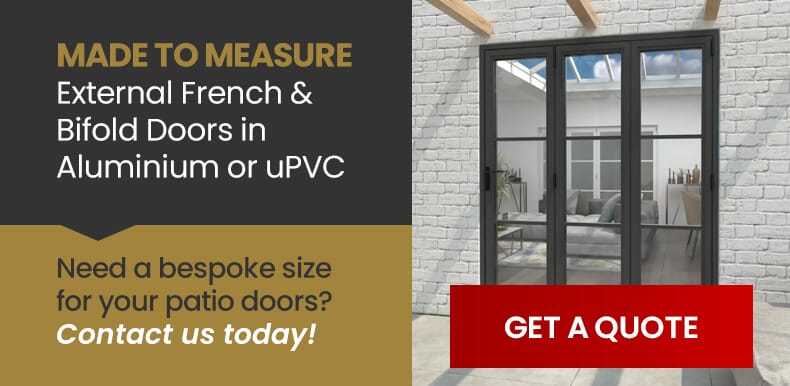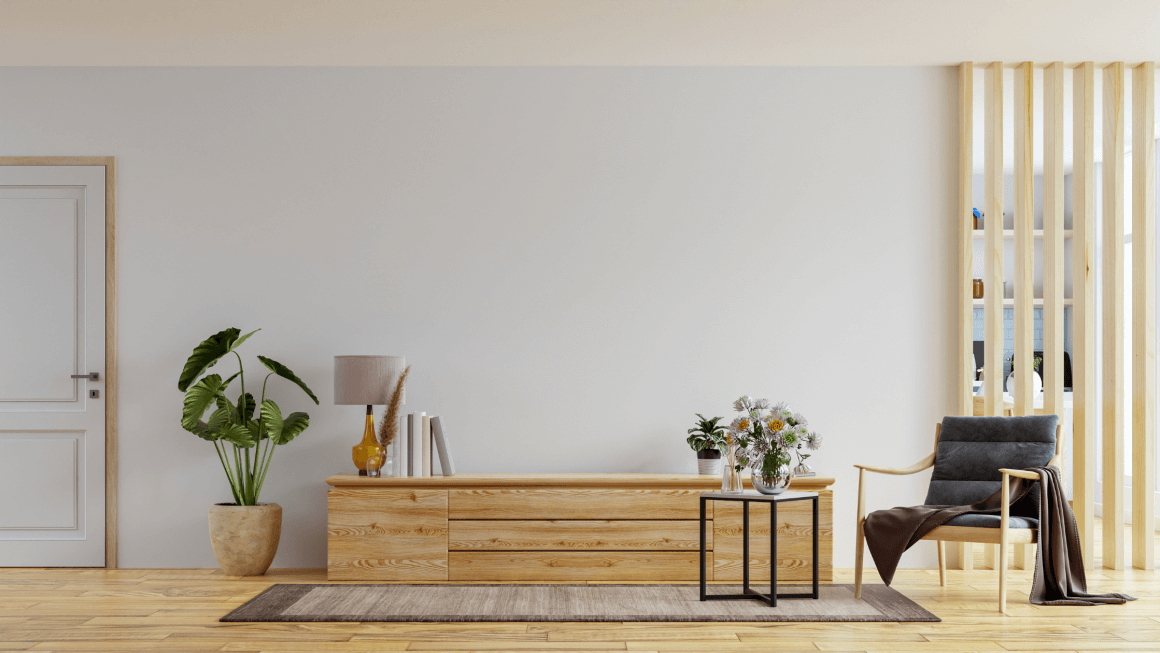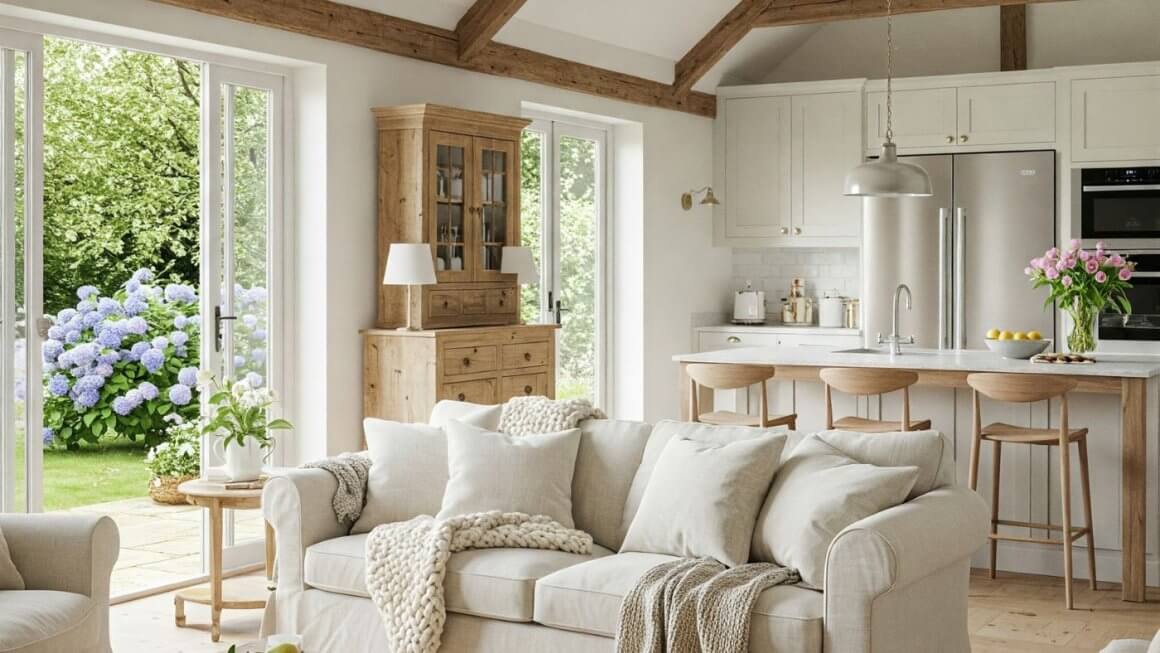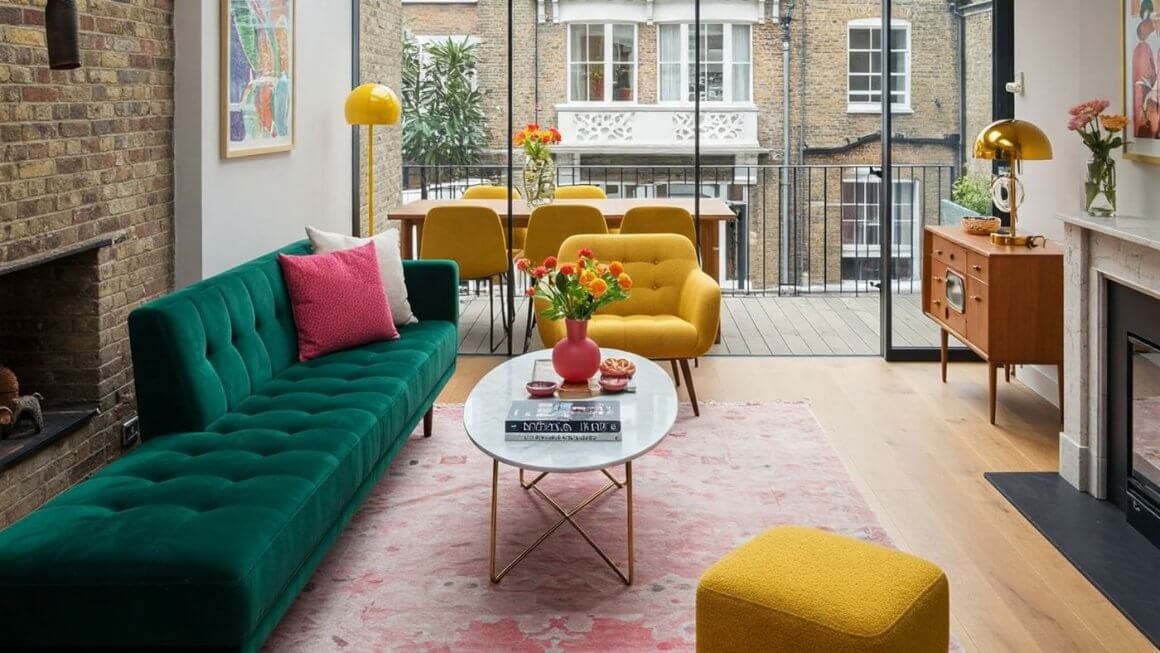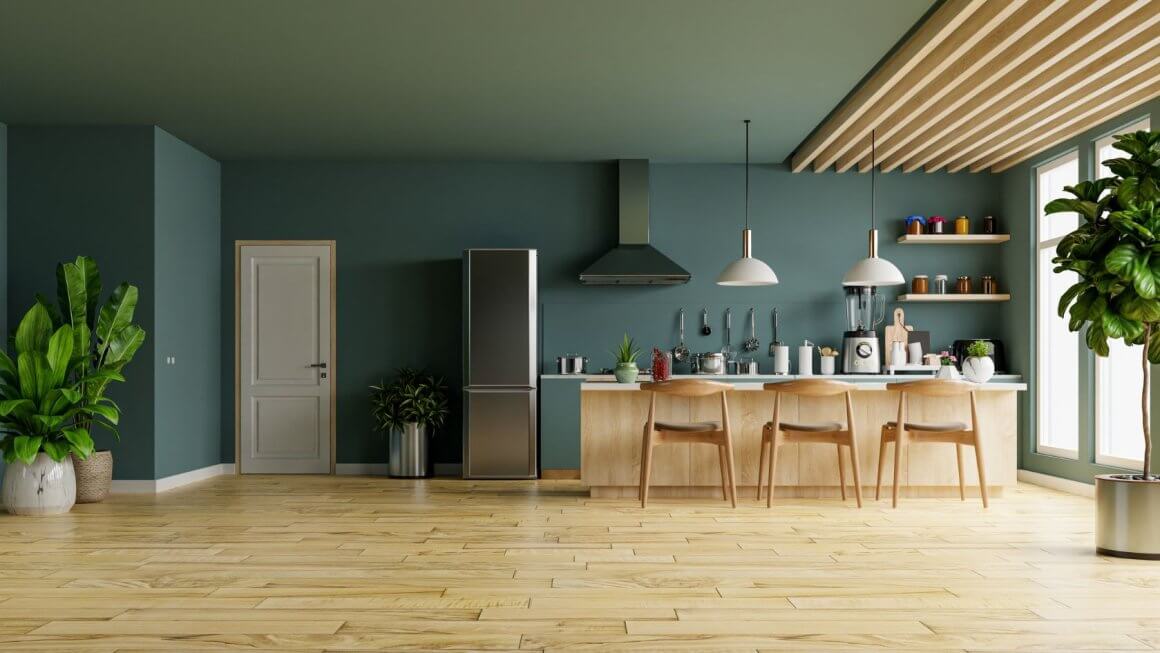Ever felt torn between the timeless elegance of traditional design and the clean lines of modern style? Transitional interior design offers the perfect compromise, creating a space that’s both sophisticated and inviting.
What is Transitional Interior Design?
Transitional design is the art of blending traditional and modern elements to achieve a balanced and harmonious look. Think of it as a well-edited conversation between two design eras, where each piece contributes to a cohesive whole.
The magic touch comes in the thoughtful layering of modern accents. Pops of colour through artwork or statement furniture, sleek lighting fixtures and contemporary hardware all work together to keep the space fresh and avoid feeling stuck in a particular era.
This adaptability makes transitional interior design a popular choice for those who want a space that reflects their personal style and can easily evolve with their tastes over time.
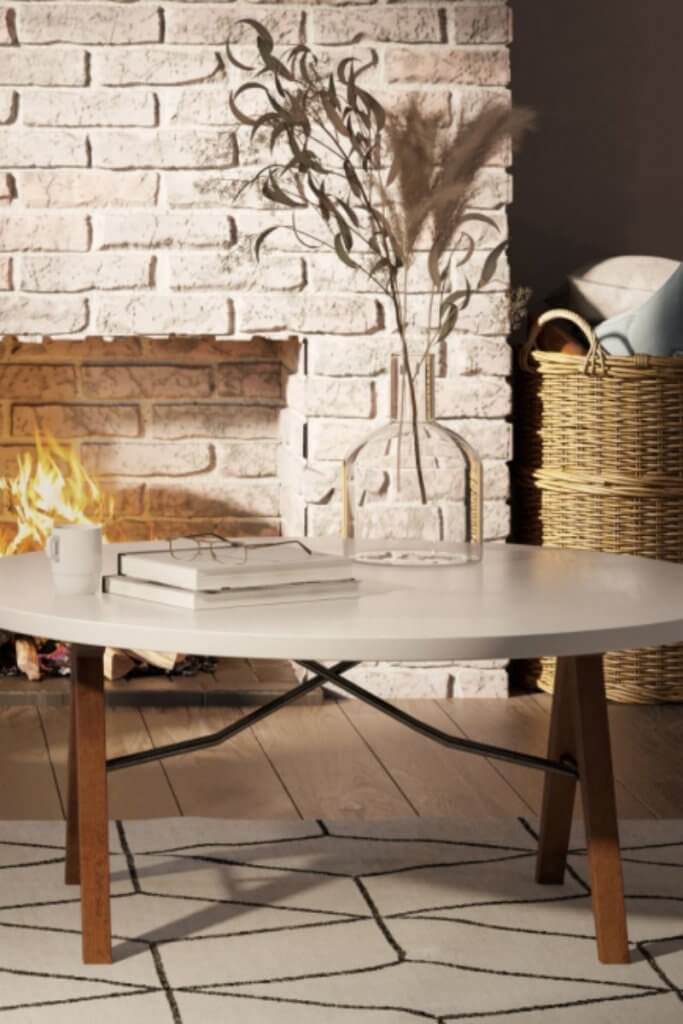
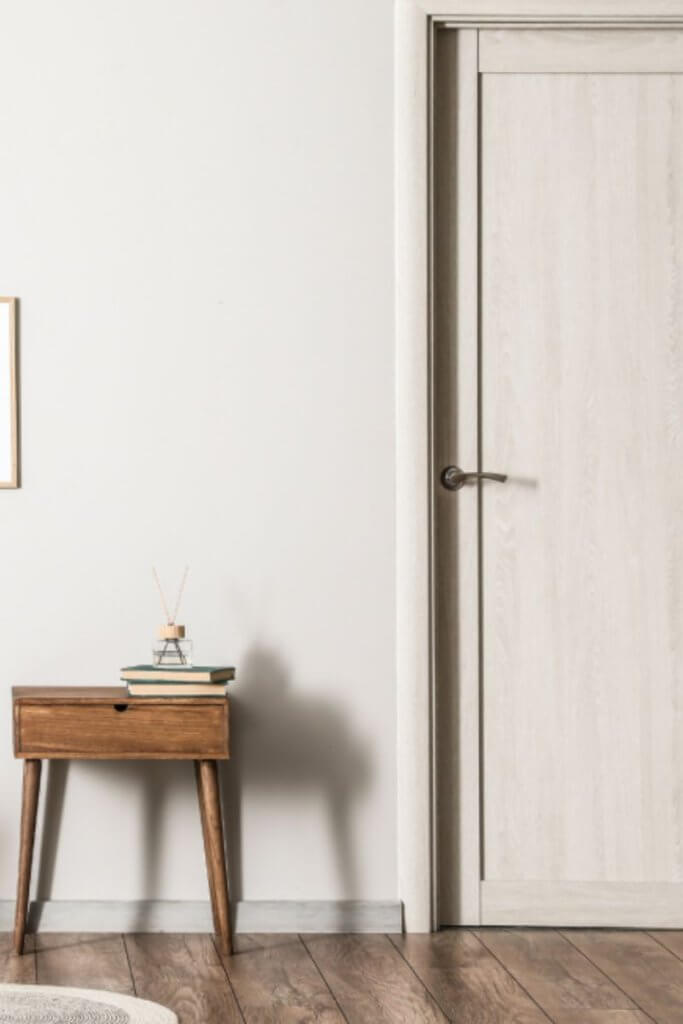
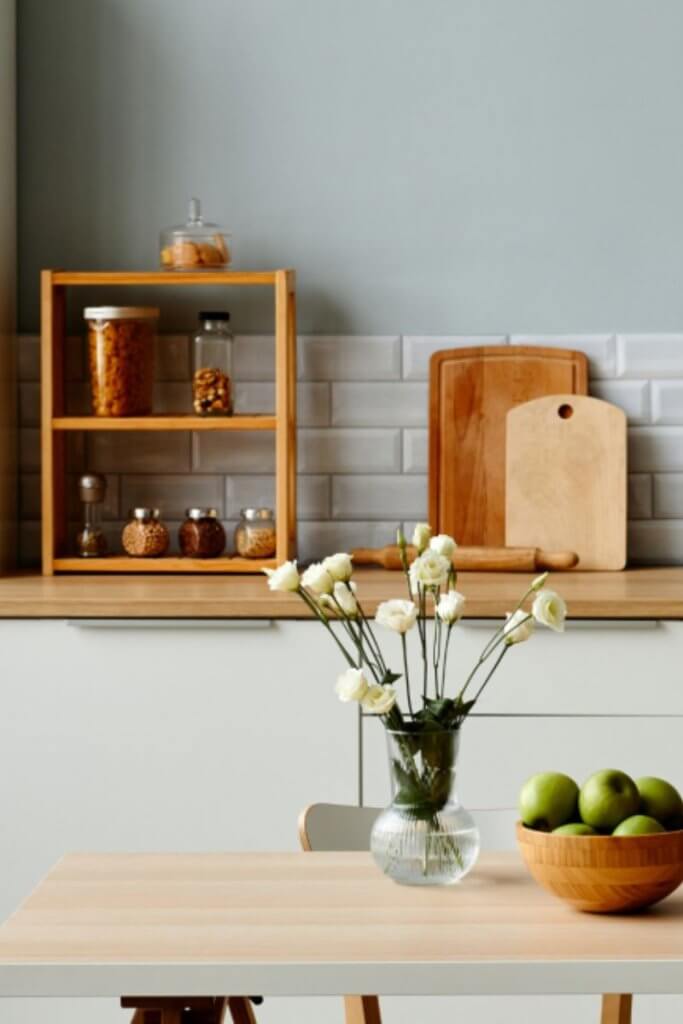
Transitional Style Interiors At a Glance
The hallmark of transitional design is the seamless integration of classic and contemporary pieces. Imagine a traditional wingback chair upholstered in a modern geometric fabric, or a sleek glass coffee table nestled beneath a hand-woven rug. You could also weave depth and dimension using traditional doors with raised mouldings.
Discover how to capture a modern luxury vibe by choosing internal doors with raised mouldings. An interior design trend on the rise.
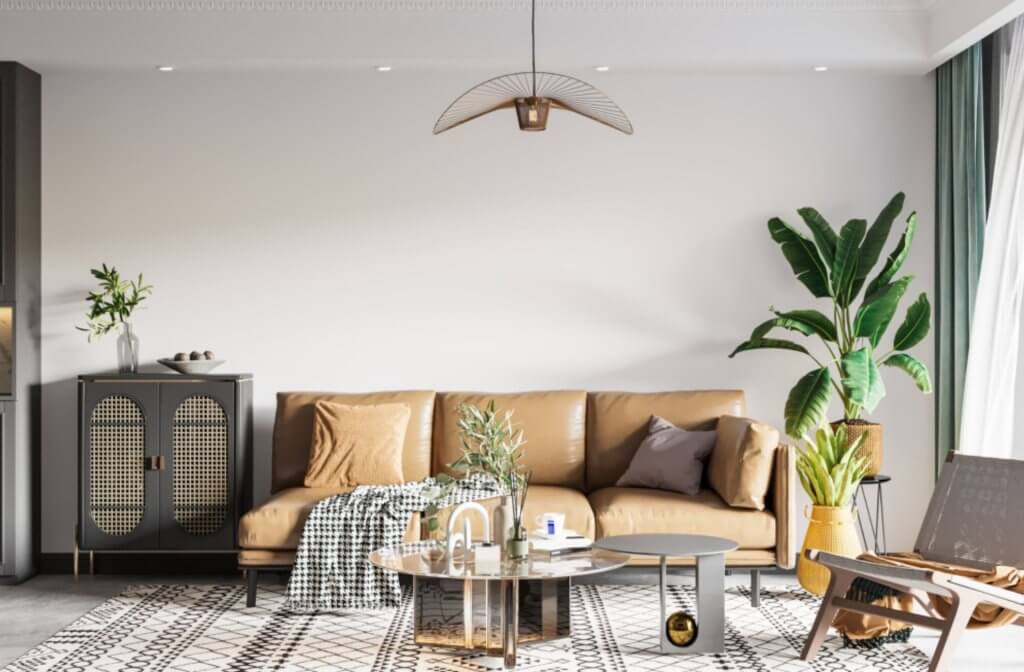
What are the Colours of Transitional Style?
Transitional spaces often favour a neutral scheme, with beiges, taupe and creams forming the foundation.
Soft greens, muted yellows, blush pinks and deep blues introduce colour while keeping the vibe calm.
Complete the look with darker wooden tones, deep charcoals and blacks. These add depth and contrast.
Discover how to harness the power of monochrome accents and chocolate brown tones to recreate the perfect neutral transitional home interiors look.
Getting Started: Modern Transitional Interior Design Ideas
Step one: Introduce Clean Lines with Soft Touches
While transitional design incorporates modern elements like clean lines and simple silhouettes, it doesn’t shy away from softer touches. Wall panelling in a textured finish adds visual interest. Pair with Crittall style doors for industrial edge or cottage internal doors for character.
Step two: Bring in Statement Features for Wow Factor
Transitional interiors often feature a statement piece, either a classic heirloom or a modern showstopper. Think: Sleek sliding doors that provide panoramic views or bespoke bifold doors that meet at a corner. This type of focal point adds personality and centres the space.
Find out more about the wall panelling trend and using doors as design elements as part of home projects.
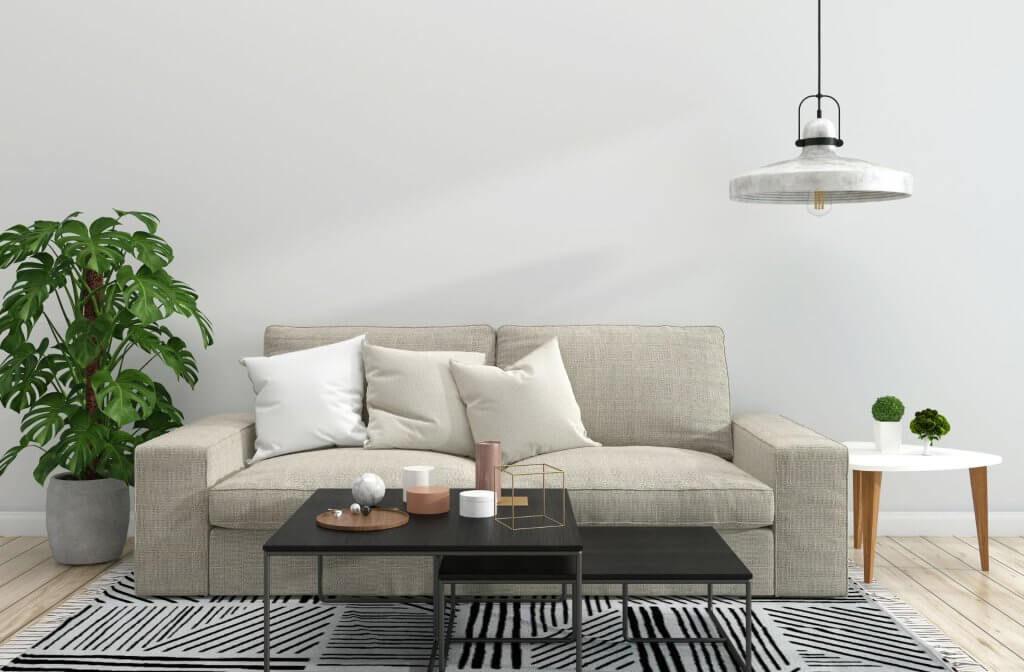
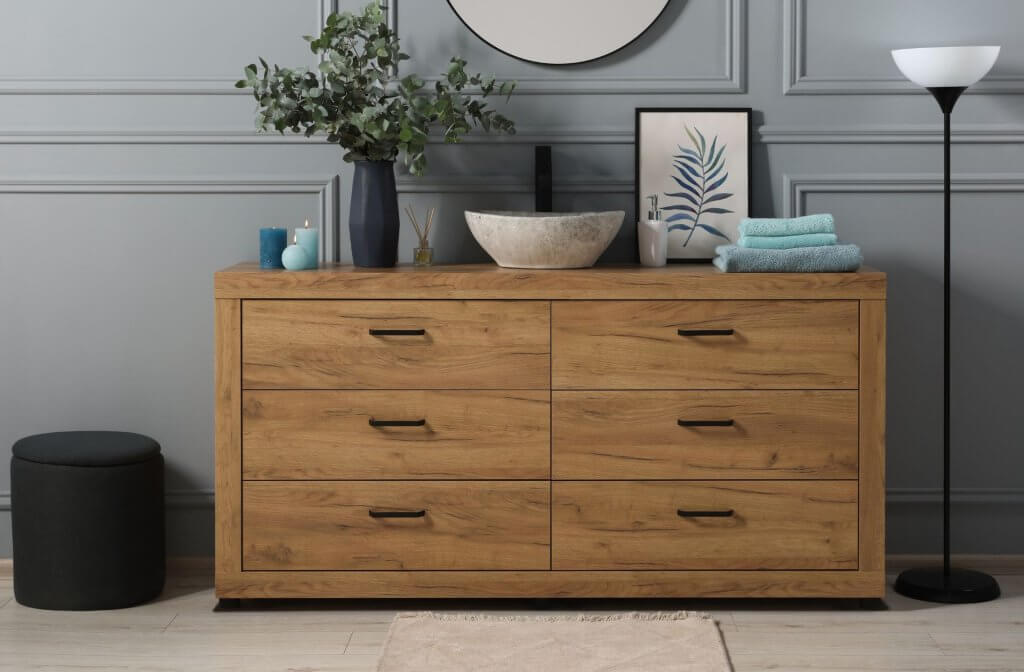
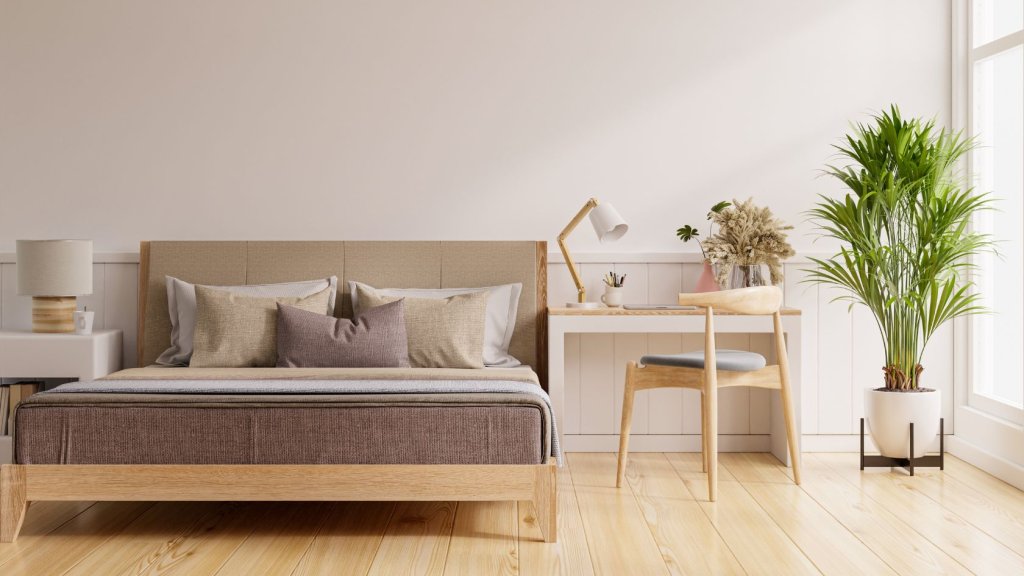
What Materials Are Used In Transitional Interior Design?
Transitional interiors achieve their balanced look through a thoughtful mix of materials.
Wooden doors like walnut doors or oak doors provide a timeless foundation, while sleek metal hardware such as chrome or brushed nickel add a modern touch. Especially when paired with features such as wooden beams, exposed brick walls or traditional fireplaces.
Glazed internal doors and clear acrylic furniture introduce lightness and openness, while fabrics such as linen, velvet and leather offer a range of textures for visual interest. This interplay of classic and contemporary materials creates a space that feels perfectly balanced.
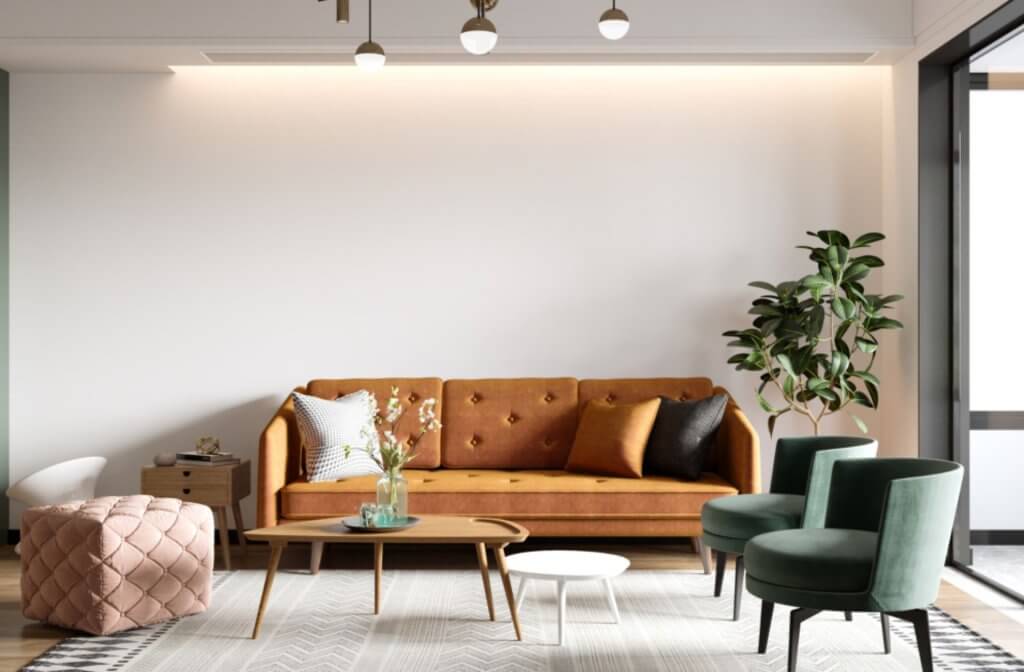
How is Traditional Style Different From Modern Style?
Broadly, transitional design stands out from modern style by embracing a softer touch.
While modern spaces favour minimalism and clean lines with a focus on function, transitional interiors incorporate these elements but temper them with warmth.
Transitional interiors welcome curves alongside straight lines, textured fabrics alongside smooth surfaces, and classic materials seen in features such as oak cottage doors.
This creates a comfortable feel, making transitional spaces perfect for those who appreciate a modern aesthetic but also crave elegance and cosy vibes.
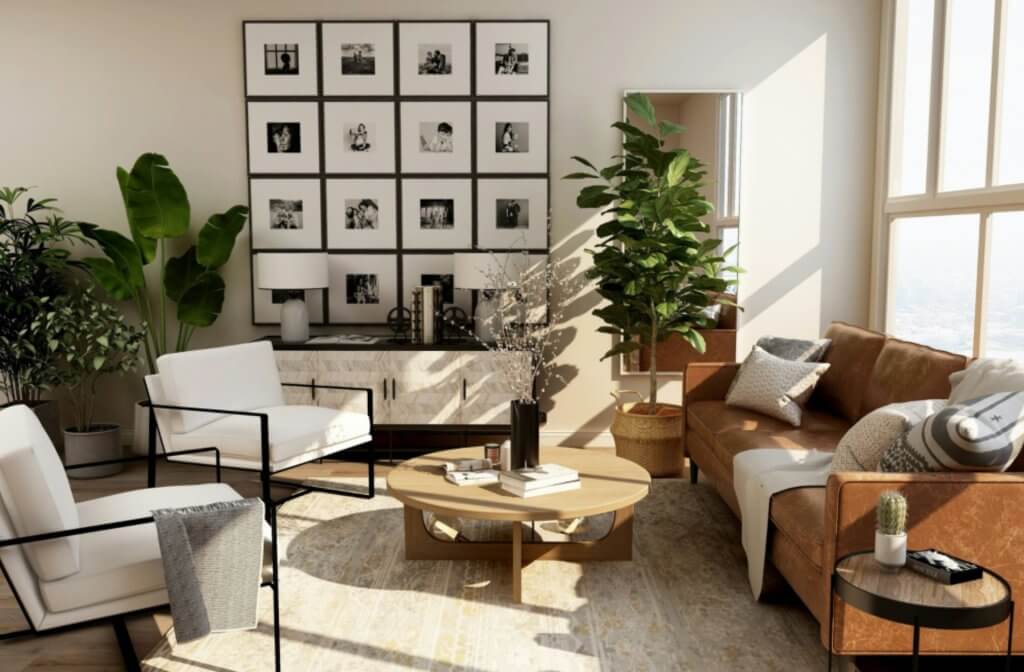
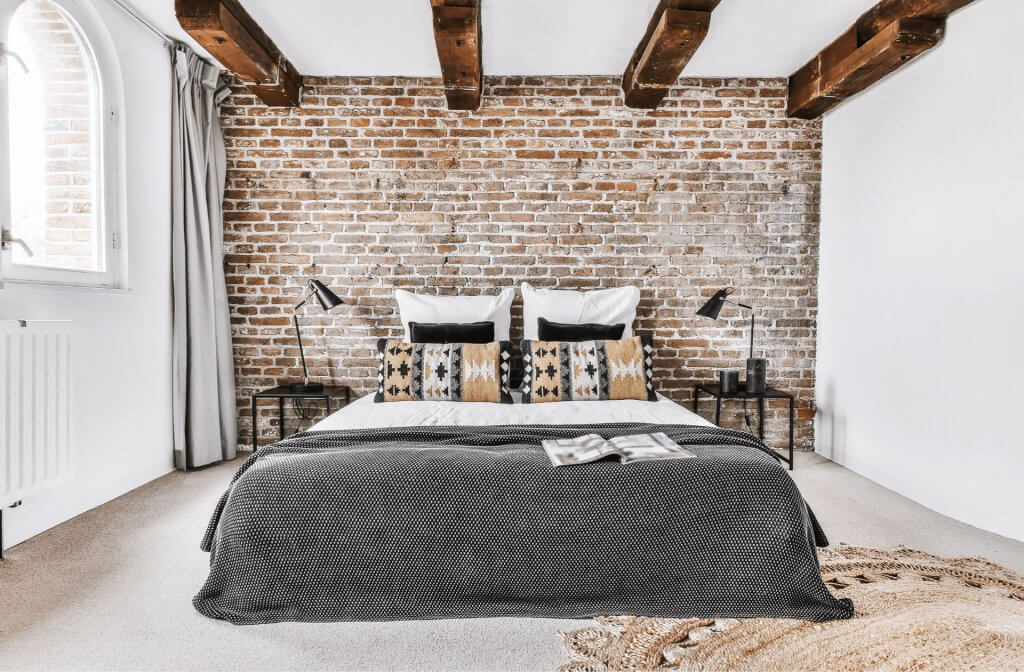
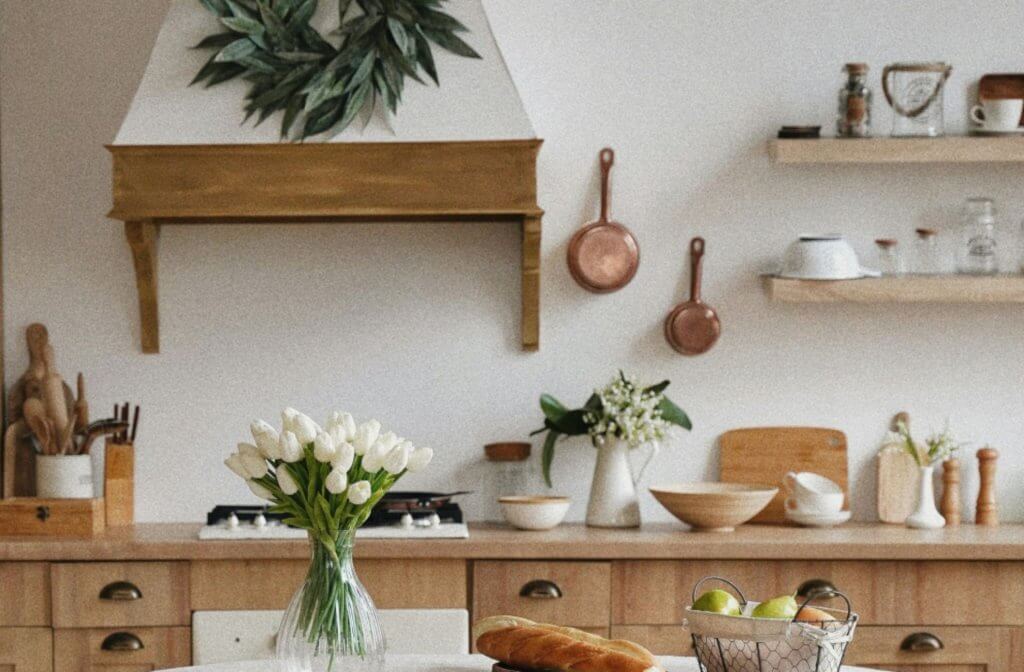
Modern Farmhouse Interior Design
vs Transitional Interior Design
Modern farmhouse and transitional design share a love for clean lines and a neutral palette, but their vibes diverge when it comes to overall feel.
Overall, modern farmhouse leans into a more rustic charm, incorporating distressed woods, shiplap accents, and vintage touches. It evokes a sense of countryside-chic and lived-in comfort with features such as cottage internal doors and subtle floral wallpaper.
Transitional design, on the other hand, is a more polished look. While it might incorporate natural materials like wood, they’re often sleek and finished. Think: Mexicano doors that strike a balance between clean contemporary and classic.
The general focus is on creating a balanced and sophisticated space that feels current, not nostalgic. However, that isn’t to say these two broadly complementary aesthetics can’t be combined to celebrate the best aspects of both…
Learn more about modern farmhouse interior design by diving into our trend report.
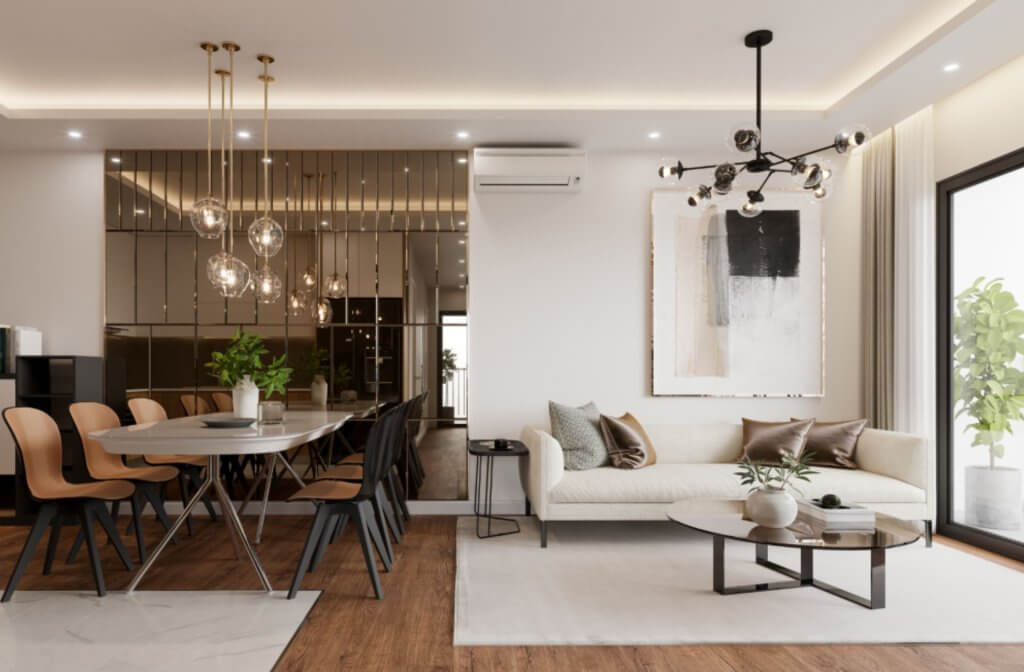
Classic and Modern Interior Doors for Transitional Homes
When it comes to transitional design, the best interior doors walk the line between classic and modern, seamlessly integrating into your overall aesthetic.
Shaker Style Doors
A timeless favourite, shaker doors feature clean lines and recessed panels. They come in various configurations and offer a versatile choice for any room.
Raised Panel Doors
Similar to shaker doors, raised panel doors have a more pronounced profile on the panels, adding a touch of traditional detail without feeling too vintage.
Frosted Glass Doors
This is a great option for areas like bathrooms or utility rooms. Doors with frosted glass panels allow light to flow through, brightening up a space while maintaining privacy.
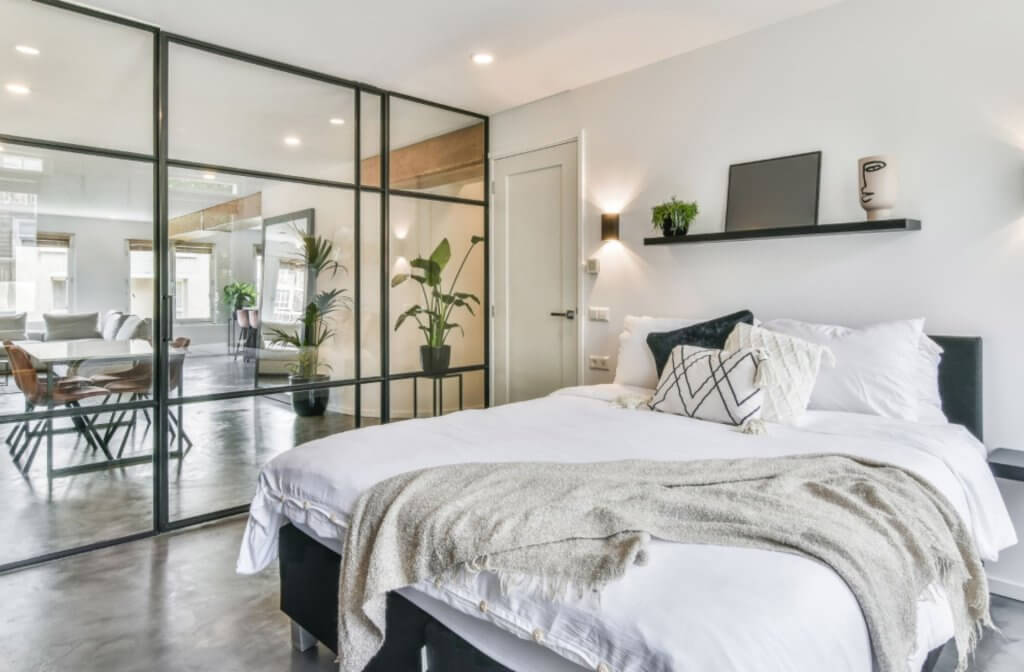
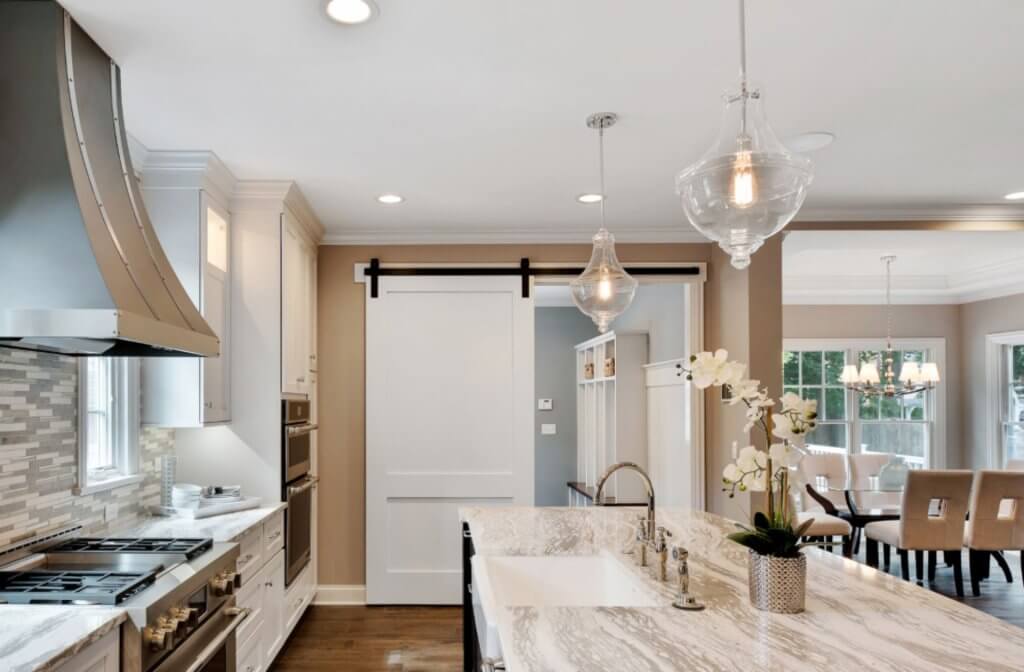
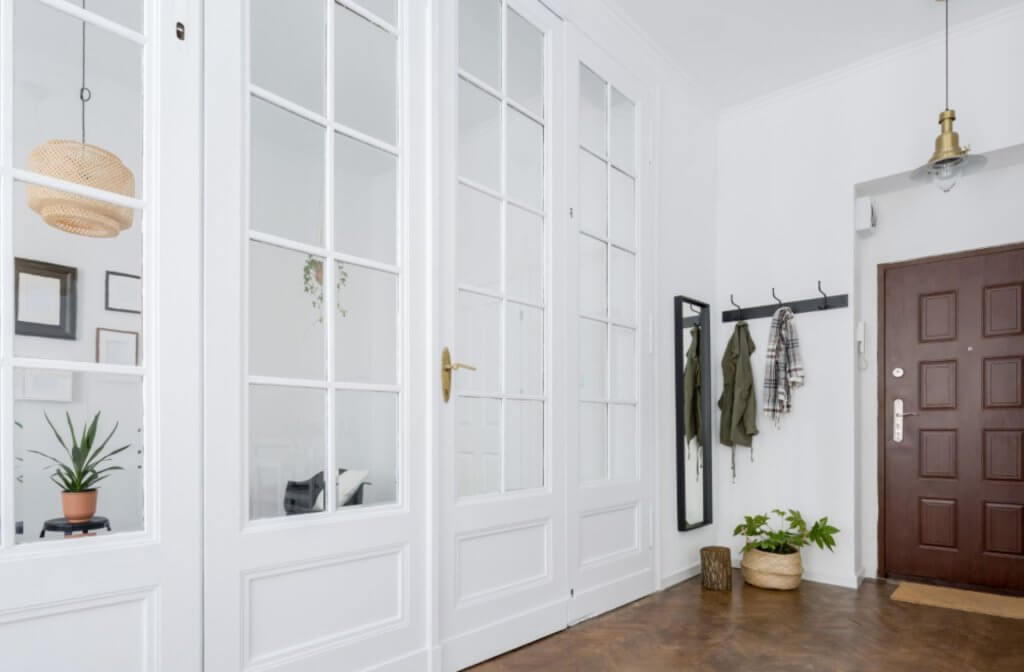
Crittall Style Doors
Choose black internal doors for extra contrast. Clear glass with a modern grid pattern combines sophistication with monochromatic edge, and allows for a glimpse into another room, creating a sense of openness.
Sliding Barn Doors
While often associated with rustic design, barn doors and pocket doors can also lend a transitional feel. Choose a clean-lined design in a neutral wood tone for a modern twist.
French Doors
Large double doors with clear or frosted glass panels infuse a hint of elegance and grandeur, perfect for dining rooms, home offices and media rooms.
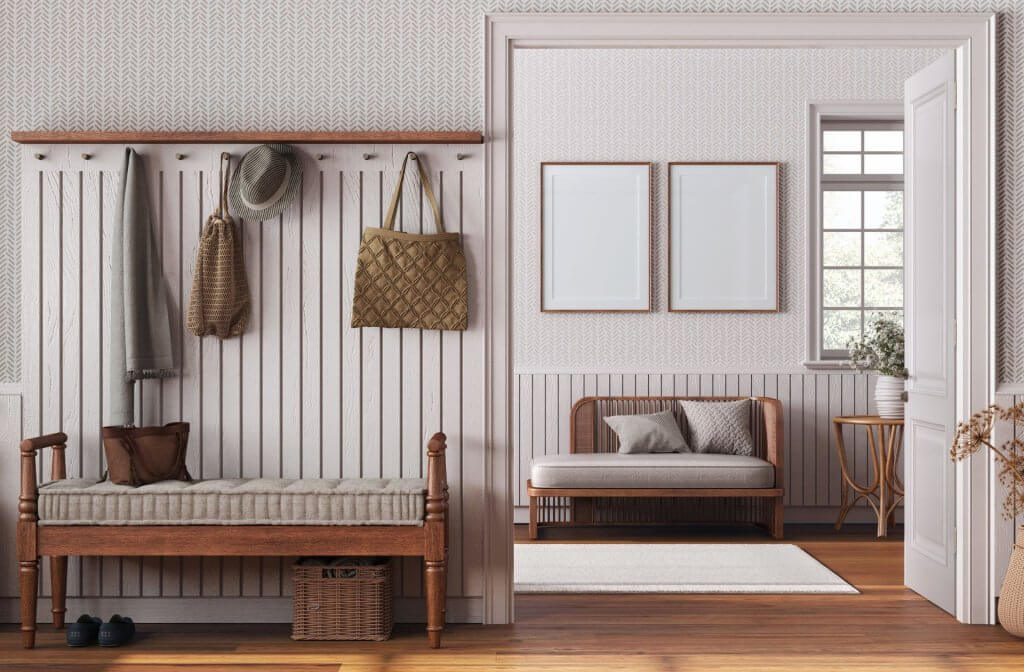
Door Features That Complement Transitional Interiors
Don’t forget the hardware. The right door knobs and levers can elevate your transitional look. Choose simple, clean lines in finishes like brass, chrome, or matte black. A popular door handle trend right now.
When you buy interior doors online, consider the material options. Sturdy solid wood doors offer a classic feel, while lightweight hollow core doors can be more budget-friendly.
White is a popular choice for transitional style doors, as it creates a light and airy feel. However, darker stained wood doors and black interior doors can also work well. Pair with lighter walls to capture an airier environment.
Is Transitional Still in Style?
The transitional design trend is all about adaptability and longevity. In contrast to styles that may quickly go out of fashion, transitional interiors showcase a timeless aesthetic. This is achieved by creating a foundation of classic elements like clean lines, neutral palettes and natural materials. Meaning this is an aesthetic that’s unlikely to date.
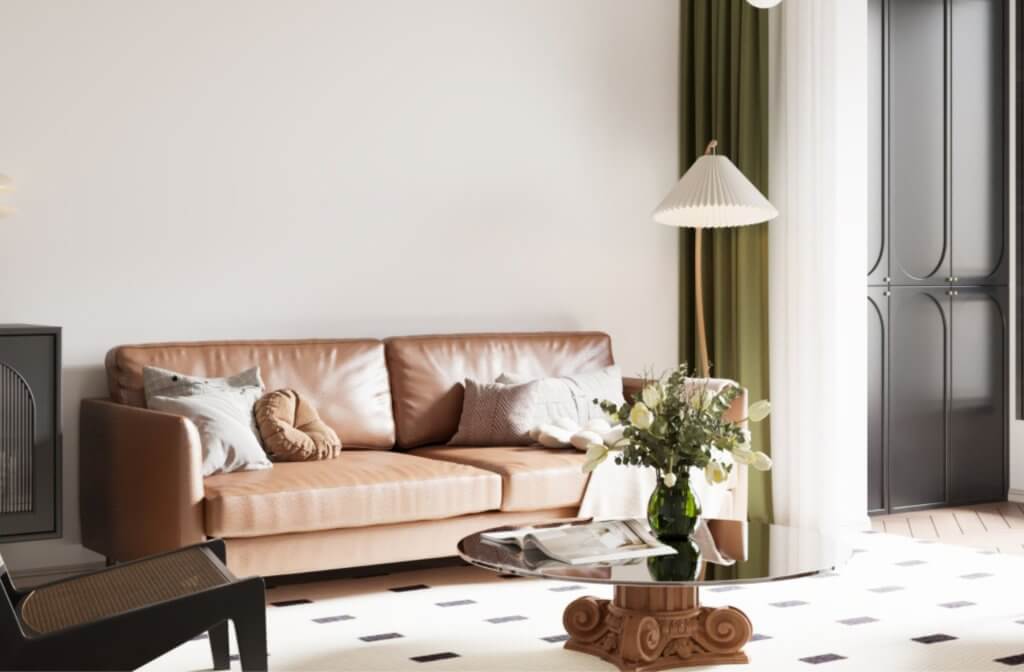
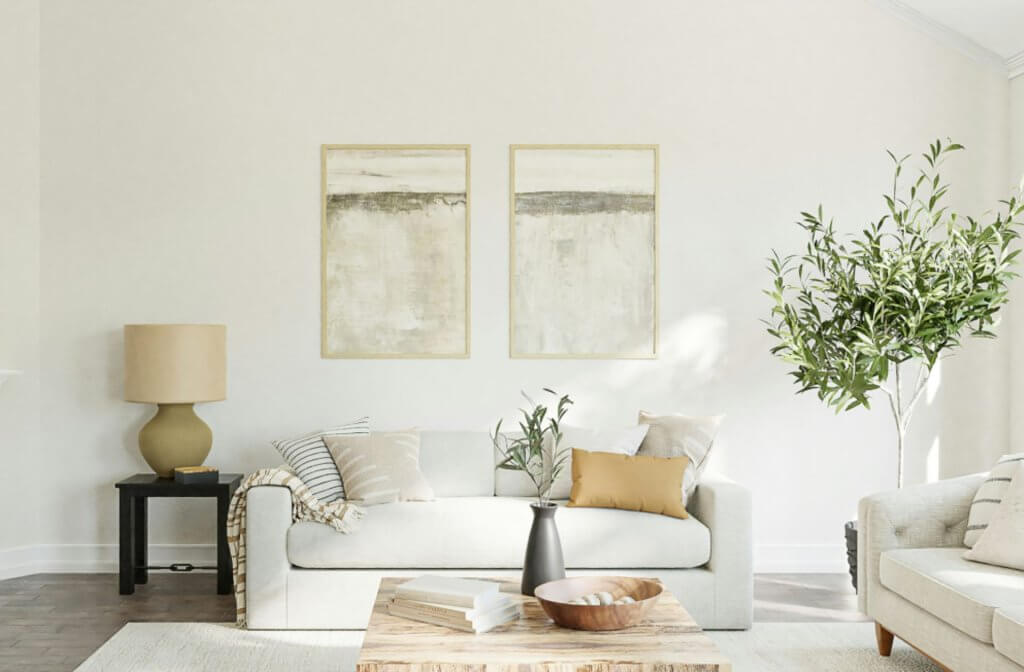
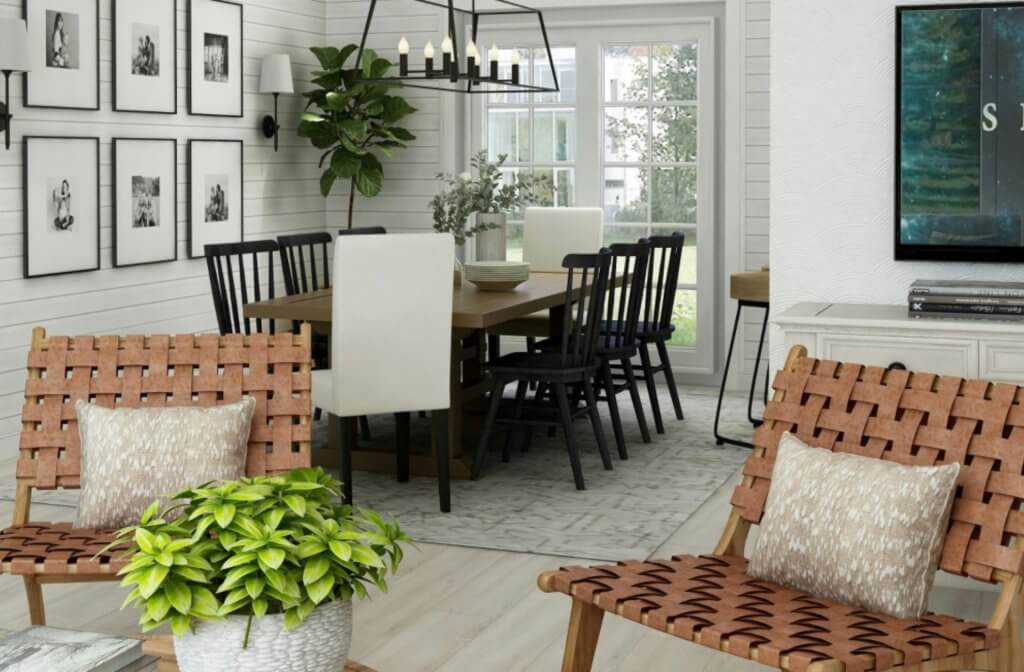
Modern Transitional Interior Design Characteristics
Start with a Base
Begin with a neutral colour palette (and a couple of deeper shades) for walls and furniture. This creates a blank canvas for layering in different textures and patterns.
Mix and Match
Don’t be afraid to experiment! Pair a traditional wingback chair with a sleek side table, or hang modern artwork above a classic console table. Choose wooden interior doors for extra texture.
Accessorise Wisely
Accentuate your space with a collection of traditional and modern accessories. Vintage lamps add character to a sleek console table, while modern throw pillows can refresh a classic sofa.
Lighting is Key
Transitional spaces benefit from layered lighting. Combine ambient lighting and task lighting with natural light from patio doors and glazed internal doors for an airy atmosphere.
Achieve That Perfect Old-Meets-New Look
With The Right Doors
Transitional design is all about creating a space that reflects your personal style. Follow these tips and let your creativity flow to curate a look that’s both timeless and chic.
Complete your project with on-trend wall panelling, illuminating glass patio doors and the best value interior doors supplied by the UK’s top brands. And join us over on Instagram for more ideas and inspiration.


